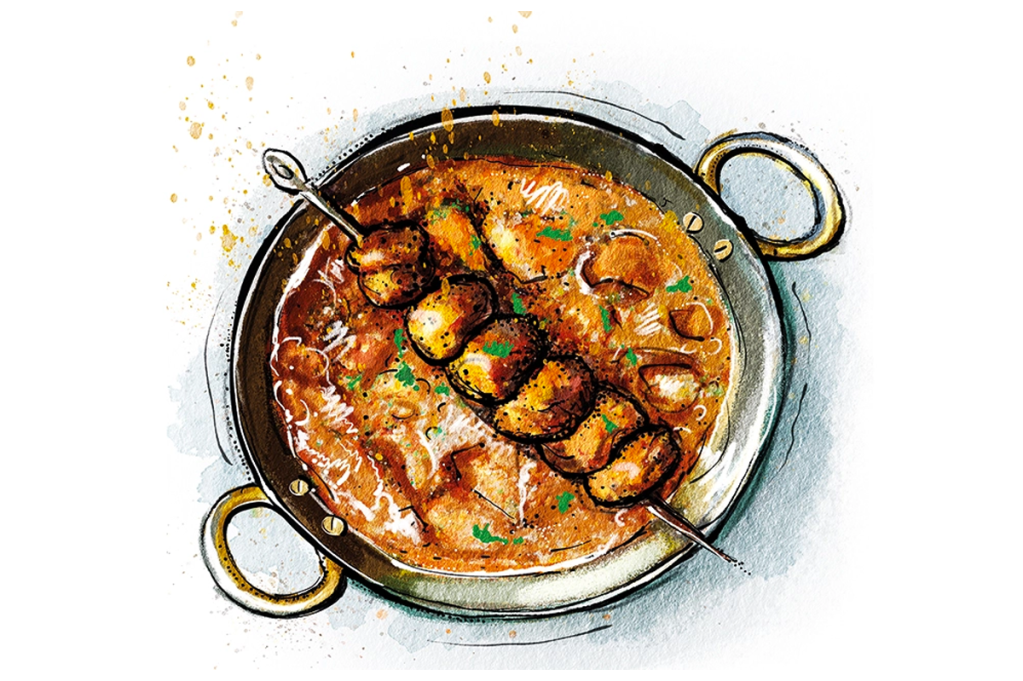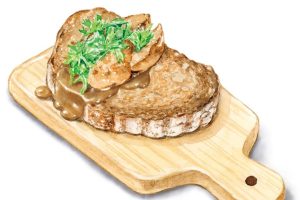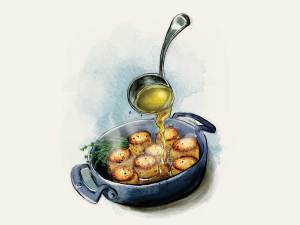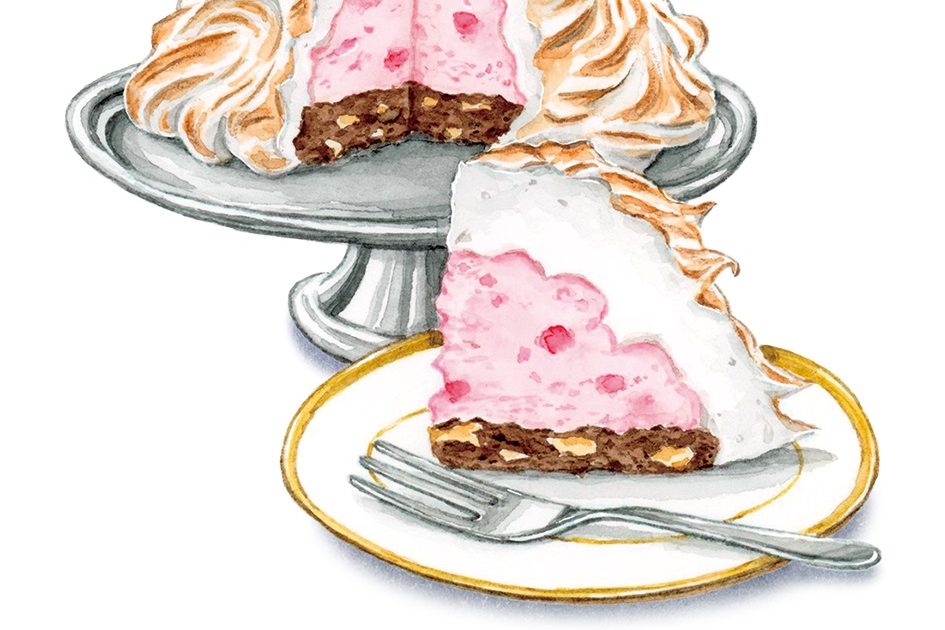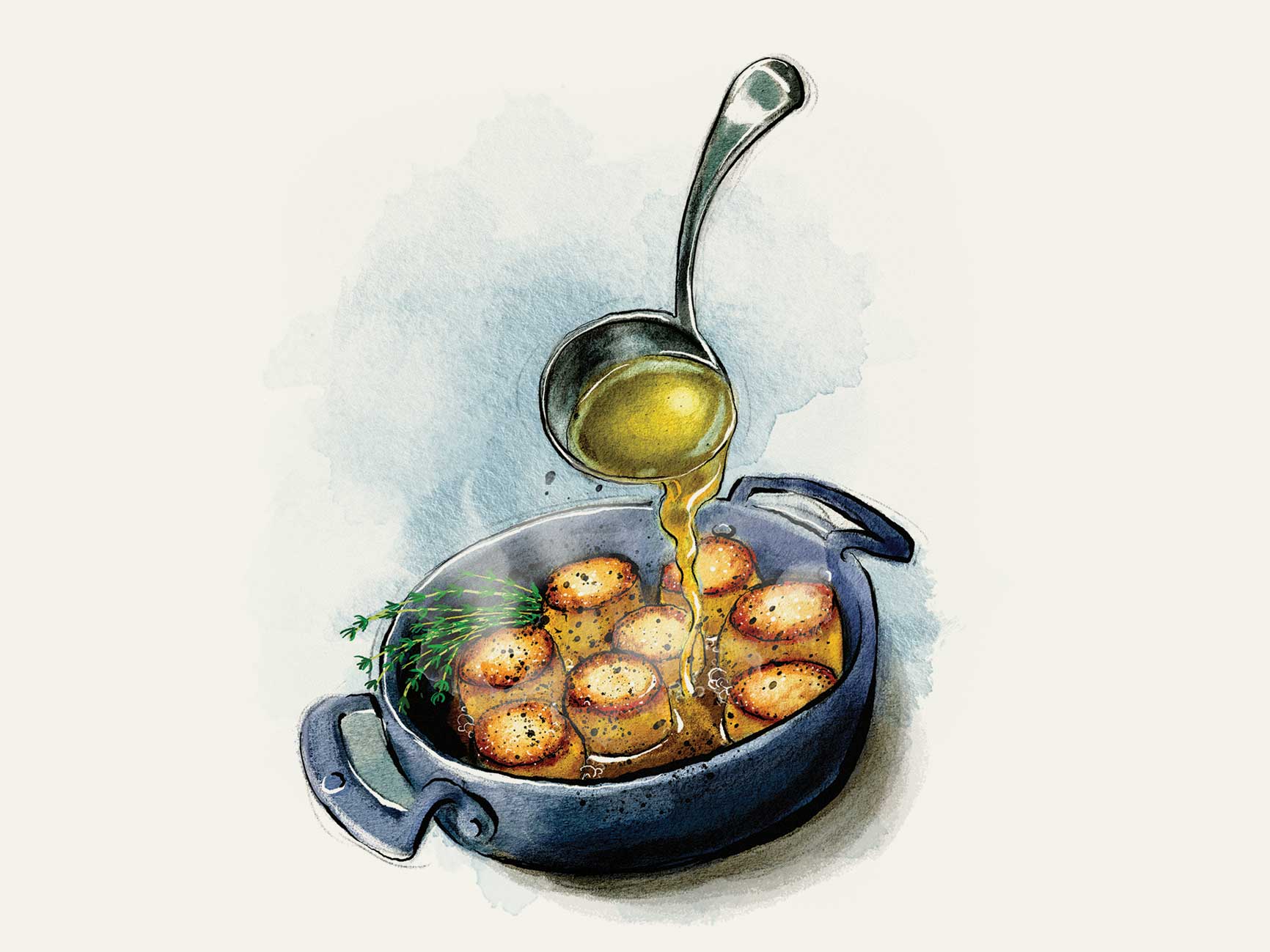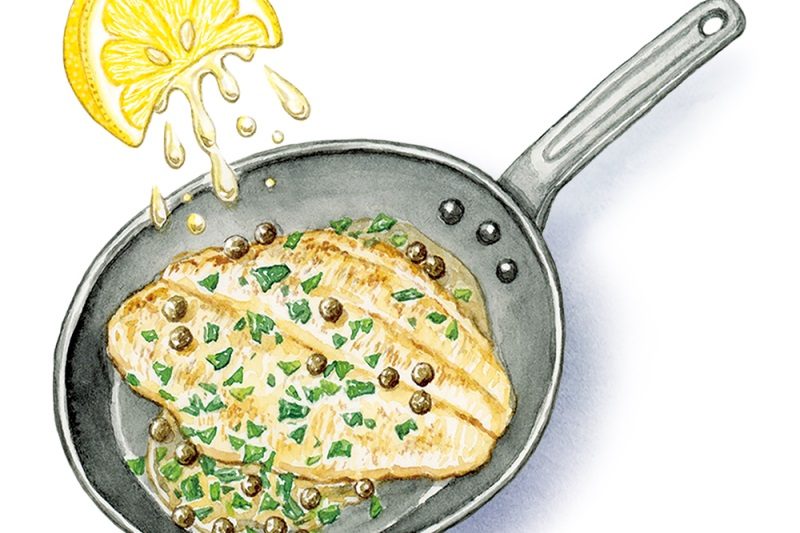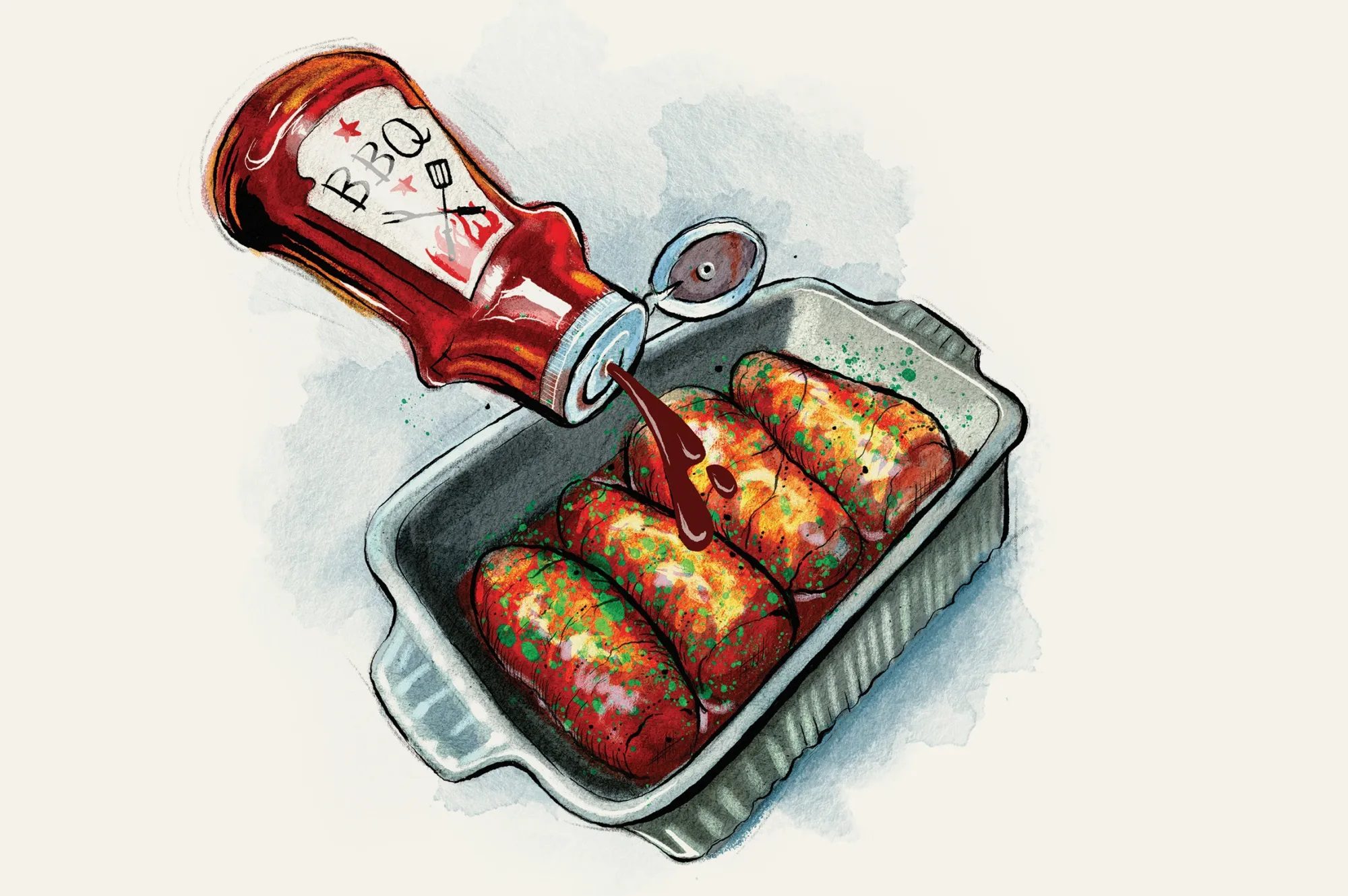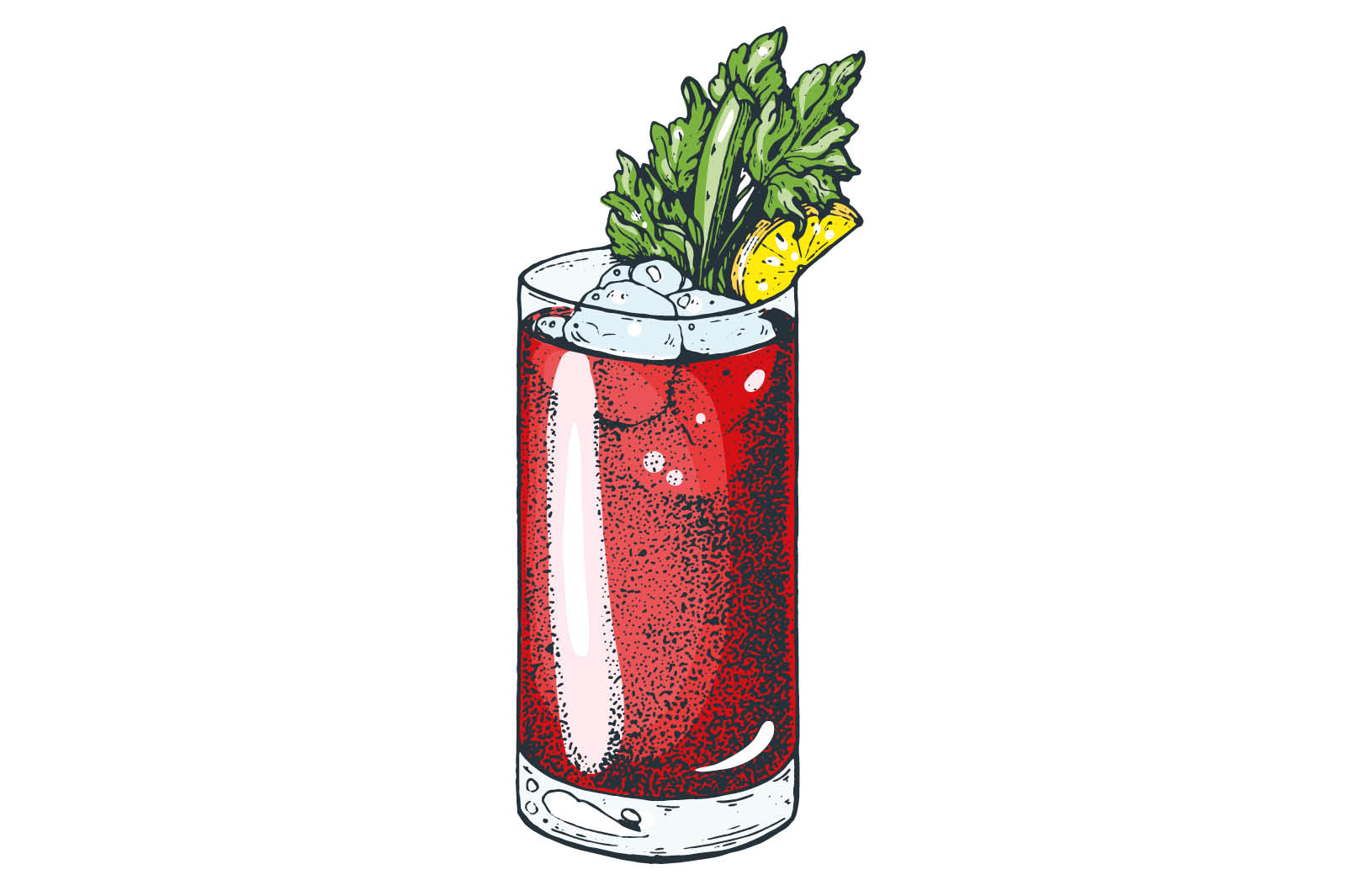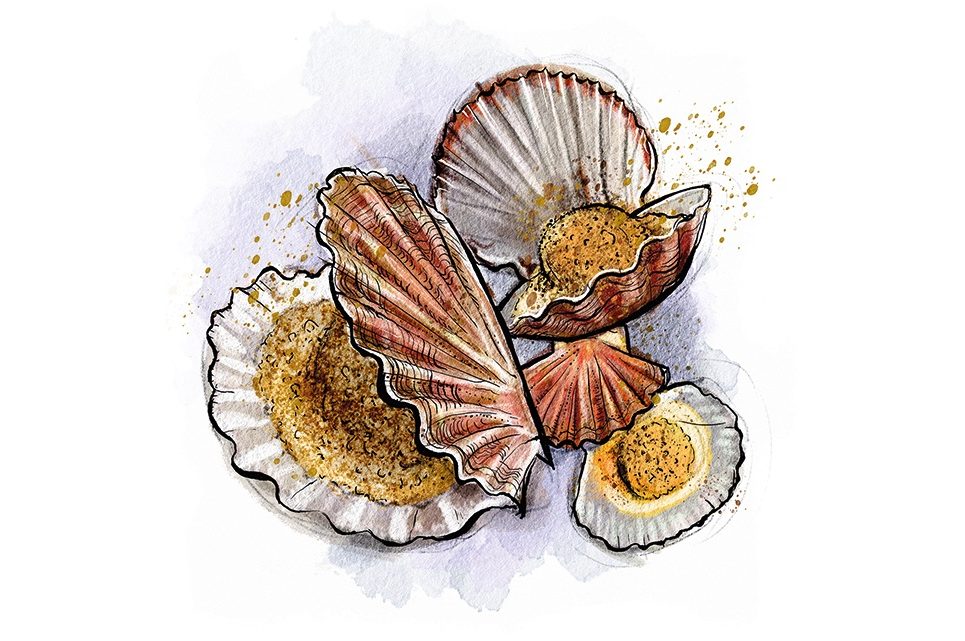Chicken tikka masala has become something of a joke. When, in the late 2000s, it was topping lists of Britain’s favorite dishes, its popularity was seen as an indictment of the nation’s cuisine: we nick stuff from other cultures, strip out its character and call it our own.
This is all deeply unfair: chicken tikka masala is a fantastic, aromatic dish that has earned its place in British culinary history. But there is an element of truth to some of the accusations. Chicken tikka masala is indeed a curry which probably was invented in the UK to appeal to British palates. It is mild and creamy, much more so than most authentically Indian curries. And it remains one of the most popular orders in British Indian restaurants and forms a huge number of the supermarket ready-meals sold each year.
Although its popularity is firmly established, its origins remain more questionable. The likelihood is that it was invented in the UK by migrant chefs at an Indian restaurant in the 1960s. Glasgow is keen to defend its claim to the chicken tikka crown: the story goes that, in response to a customer complaining about the dryness of his tikka chicken, the British Pakistani chef Ali Ahmed Aslam rustled up a sauce from tinned tomato soup and spices. If you’ve tasted chicken tikka masala, there is a ring of credibility to this (and if you haven’t, don’t let this description put you off). But alas the story has been debunked: Iqbal Wahhab, who owns the Cinnamon Club in London, has since confessed to making it up to “entertain journalists.”
Nevertheless, Glasgow so took this story to its heart that it remains the stuff of urban legend and, in 2009, Mohammad Sarwar, then Labour Member of Parliament for Glasgow Central, tabled an early-day motion in parliament for the city to be given EU Protected Designation of Origin for chicken tikka masala. It did not succeed.
What we do know is that chicken tikka masala is very similar to murgh makhani, which was created in New Delhi in 1948. Kundan Lal Jaggi introduced a tandoor oven to his restaurant Moti Mahal. After cooking the chicken in the tandoor, his chefs would stir tomato and butter through the cooking juices, and serve it with the chicken. This became murgh makhani, or butter chicken. Murgh makhani uses larger, bone-in pieces of chicken than chicken tikka masala does, and tends to include more butter and less cream. But the use of the tandoor is the same, cooking the chicken quickly at very high heat until it is charred and smoky.
The tandoor oven probably reached the UK in the late 1950s, but didn’t become commonplace for at least another decade. At some point after 1960, chicken tikka masala became an established tandoori dish, and Britain adopted it as its own. In 2001, then British foreign secretary Robin Cook described it as a “perfect illustration of the way Britain absorbs and adapts external influences.”
Tandoor ovens reach temperatures of 840°F, which means the chicken cooks hot and fast. You’re unlikely to be cooking this chicken in a tandoor (if you are, can I come round?) so the next best thing is to thread the chicken on to skewers and cook it under the grill on its very highest temperature. If I’m feeling fancy, I leave the chicken on its skewers, but often I remove and fold it through the sauce.
There are many gorgeous, fun recipes that I recreate for this column and enjoy immensely. But some of them (I’m looking at you, Black Forest Gateau) are passing guests in my kitchen. I can say hand on heart that this is a dish we have almost every week in our house. You can make the constituent parts in advance and then combine and reheat when you’re ready to serve — and in fact, it improves overnight. It is a real workhorse: easy and comforting enough to be eaten from big bowls on a Sunday evening, and handsome enough, chicken blackened and still on skewers balancing on the edge of the plate, to serve to friends. I like to dish it up with a pile of blistered, puffed paratha.
Makes 4 Takes 1 hour 15 minutes Marinates 2-12 hours/overnight
For the chicken
- 16 skinless, boneless chicken thighs, cut into one-inch chunks
- 5¼ oz yoghurt
- 2 tbsp lemon juice
- 1 tsp chilli powder
- 1 tsp garam masala
- 1 tsp paprika
- 1 tbsp ginger paste
- 1 tbsp garlic paste
For the sauce
- 2 tbsp vegetable oil
- 2 onions, sliced
- 1 tbsp ginger paste
- 1 tbsp garlic paste
- 1 tsp garam masala
- 1 tsp chilli powder
- 1 tsp ground cumin
- 1 tbsp tomato paste
- 14 oz tin of tomatoes
- 3⅓ oz double cream
- 1 tbsp honey
- fine salt, to taste
- Fresh coriander for scattering
- Mix together the yoghurt, spices, salt garlic, ginger and lemon juice and place in a bowl big enough to hold the chicken. Cover the chicken with the marinade, and refrigerate for two to twelve hours (overnight is great)
- Place the vegetable oil in a heavy-based pan over a medium heat. Cook the sliced onion for fifteen minutes until the onion is light golden. Add the ginger and garlic paste and cook for another couple of minutes, followed by the spices, then the tomato paste, and cook for two minutes more
- Add tinned tomatoes — crushing the tomatoes against the side of the pan with a spoon to break apart. Bring to a simmer and cook for ten minutes, stirring frequently to stop the mixture sticking to the bottom of the pan
- Reduce heat, then add the cream and honey and a pinch of salt and cook for a final five minutes. If you prefer a looser sauce, add a little water, until you reach the desired consistency
- Divide the chicken chunks between four skewers and heat the grill to high. If no skewers, you can cook the chicken loose on a foil-lined baking tray. Grill for fifteen minutes, turning the chicken every five minutes, until it is charred and beginning to blacken in places
- Bring the sauce back up to a simmer, pull the chicken from the skewers, and fold them in the sauce. Serve immediately with rice or paratha or both. Scatter coriander over the top
This article was originally published in The Spectator’s UK magazine. Subscribe to the World edition here.



